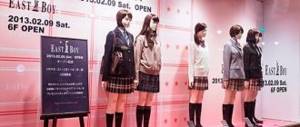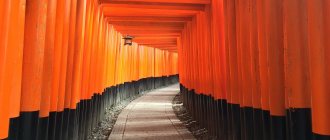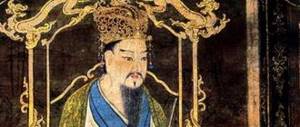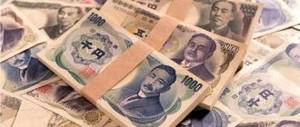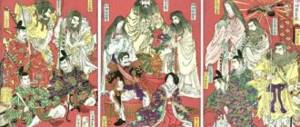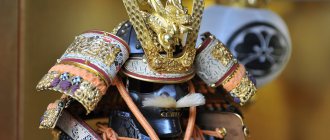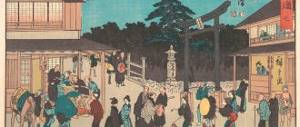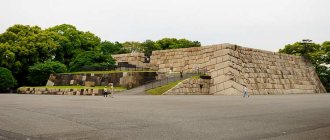At the beginning of the 17th century. samurai rule was established in Japan, which lasted more than 260 years. This happened in 1603, when Tokugawa Ieyasu came to power and received the title of shogun from the emperor. Tokugawa created a new shogunate in the city of Edo, which led to the overthrow of imperial power. Tokugawa and his successors ruled the country for 264 years, until 1867, when the power of the emperor was again restored and the samurai government was eliminated.
Edo was characterized by stability in all spheres of life, the flourishing of culture, including samurai, and a complete ban on the practice of the Christian religion. But there were also negative phenomena of the establishment of the Tokugawa shogunate. Japan already did not particularly support foreign policy ties; during the Edo era it fell into complete isolation. The country banned any contacts with the countries of Western Europe and the USA. Perhaps this approach to governing Japan created the preconditions for stabilizing the situation in the political and economic spheres, in society.
Formation of the Tokugawa Shogunate
The capital of the new regime of Japan was the city of Edo, which in the 17th - mid-19th centuries. served as the political and administrative center of the state. It all started, as noted above, with the vassal Tokugawa Ieyasu, who owned lands in the Kanto region. The castle of the new shogun's family was located here. He succeeded at the very beginning of the 17th century. receive help and support from samurai families and houses. They provided him with an army, which helped Tokugawa achieve victory over his opponents at Sekigahara. Getting rid of the opposition contributed to Ieyasu receiving the post of shogun and the founding of the new Edo shogunate (from the city where it was created). For several years, Tokugawa purged his own opponents, which allowed him to strengthen his power and become the unified ruler in the region.
Subordinate to the shogun were vassals called gokenin and hatamoto. They controlled 25% of all land in Japan, making Tokugawa one of the most powerful rulers in the country. The new government dealt with such matters as:
- Conducting foreign policy, over which he had a complete monopoly.
- Minting your own coins.
- Formation of the management apparatus.
- Publishing laws for samurai houses.
- Maintaining the financial position of the samurai.
The shogunate had its own system of hierarchy based on proximity to the Tokugawa house. Historians identify the following social groups in Japanese society that existed during the Edo period:
- Relatives of the shogun or simpan.
- Ancient vassads, who were called fudai.
- New vassals or tozama.
The samurai houses, which had a profit from land reaching 10 thousand koku, began to be called daimyo. They were guided by special legislation that was published by the government. Among the main requirements of the shogun for samurai it is worth noting:
- A ban on building castles on one's own lands without permission from the highest authority.
- A ban on political marriages between different samurai houses. This required permission from the shogun.
If the daimyo violated the prohibitions, then everything was taken away from them, and then they were transferred to remote areas of the country. It was important for the Edo regime authorities to have complete control over the daimyo, so they developed a special system for monitoring them. It consisted of several elements, the main ones being financial and political control. Each daimyo was obliged to go on a business trip once a year, complete his military service and take part in the construction of various objects.
It was difficult for the daimyo, but this did not stop them from bringing income to the treasury of the shogunate and enriching themselves individually.
One of the problems in the internal life of the Edo regime was the strong power of the emperor and his entourage. In this regard, the shogun ordered to limit the rights of the court, taking full control of the management system. For this, the emperor received full financial support from the government sitting in Edo. For this, the ruler renounced all his land holdings in Japan.
History of Edo Education
The city is located on the island of Honshu, near the Gulf of Japan, which flows into the Pacific Ocean. For a long time there were no buildings on this territory. This territory was inhabited by people back in the first century BC; these were underdeveloped tribes who built only primitive dwellings.
It was only in the 12th century that attention was paid to these territories. Taro Shigenada, a cult warrior who occupies an honorable place in the history of Japan, arrived on them. He noticed that in this place near the island there is a bay. Near it, Taro built a fort, which acquired a military purpose.
Since the building belonged to him, over time he received the name Edo, which means “entrance to the bay” (according to a long-standing Japanese tradition, the name was given according to the place of residence). For three centuries, the building controlled the bay, which is why it attracted the attention of rulers.
Tokyo on the map
The situation within the country during the Tokugawa era
The Edo government tried to pay maximum attention to various areas of economic life. In particular, trade was supported. All traders working abroad were awarded certificates with official seals. This not only boosted international trade, but also raised Japan's international profile. State ships were no longer confused with pirate ships; Macau, Taiwan and other countries in Southeast Asia began to open their ports for them.
Thanks to trade, the Japanese began to create the first foreign colonies and cities in which traders, merchants, and officials lived. Already at the beginning of the 17th century. the number of Japanese who moved to live in the colonies reached 10 thousand.
Despite the successes in the trade sphere, the shogunate was forced to limit trade. The reason for this policy was the unfolding of the confrontation between European countries in the Japanese markets. England blamed Portugal, Holland blamed Spain. At the same time, each of the countries attempted to capture the Land of the Rising Sun. This led to consequences such as:
- The number of Christians among the indigenous Japanese has increased.
- The Shogunate banned the practice of Christianity.
- A special ban was issued on the entry of Spanish ships into Japanese ports.
- Japanese boats that were engaged in trade began to leave the harbors less and less often.
- By the mid-1630s. The government generally prohibited Japanese who had traveled abroad from returning home. Other Japanese were unable to leave the country.
Such measures caused the complete isolation of Japan from the outside world. Regular revenues to the treasury stopped, the volume of domestic and foreign trade began to decline rapidly, and the peasants found themselves in a difficult economic situation. To correct the situation and fill the treasury, the authorities increased taxes and the number of collections. This caused a wave of popular uprisings, among which the largest was the riot that swept the Shimabara Peninsula and the island of Kyushu. The uprising was led by samurai A. Tokisada, who was only 15 years old in 1637. Under his leadership, the rebels quickly captured populated areas, burned the houses of the nobility, and refused to comply with their demands. The revolt assumed threatening proportions, which forced the government to send a 120,000-strong army against Tokisada. The rebels were stopped only a year later. The consequences of the speech were terrible:
- The rebels were executed.
- Extortions have increased again.
- The policy to destroy everything Christian in Japan intensified.
- A census was carried out to force the Japanese to go to Buddhist temples and register in special magazines about the renewal of faith.
- Daimyo, during business trips and travel, had to go to regional temples and there receive a document stating that they were in the Buddhist community.
The Japanese did not like this anti-Christian policy of the shogunate and increased control over the faith, but uprisings now occurred less and less often. The government quickly responded to each protest - the army was sent out, the rebels were brutally dealt with, and economic pressure increased.
Fires are the curse of Edo
With the rapid growth of Edo's population, the population density in the Lower City, shitamachi, became incredibly high. Simple wooden, one-story naked "longhouses" filled cramped urban spaces, and the slightest mismanagement of fire or arson resulted in entire neighborhoods being burned out, with large fires occurring on average every few years. Fires were considered a kind of attraction, a landmark of Edo, as manifested in the saying “The flowers of Edo are fires and fights.”
Among the many fires that occurred in Edo, one that particularly stands out in terms of the scale of destruction was the one that occurred in the winter of the 3rd year of Meireki (1657). There are different versions about the exact boundaries of the spread of the flame, but 60% of the then city burned out, mainly in the territory of the modern Tokyo districts of Chiyoda, Chuo and Bunkyo. In addition to the Nishinomaru site, Edo Castle also burned down, the fire destroyed 550 daimyo estates, 770 estates of nearby vassals of the Tokugawa house (hatamoto), 350 temples and shrines, 60 bridges and other buildings.
After this fire, the shogunal government decided to relocate the daimyo and three Tokugawa families (Owari, Kii and Mito) who lived there outside the castle, and on the site of their estates to build lists and plantations of medicinal plants, creating a firebreak to isolate the castle buildings from possible fires. The fire also caused the massive relocation of estates, shrines and temples, for which the areas of Honjo and Fukagawa were developed across the Sumida River, and fire victims settled en masse in the Tama and Mitaka areas, which also contributed to their development. Thus, during the reconstruction after each major fire, the city gradually expanded. Thus, in less than 100 years after the arrival of Tokugawa Ieyasu, a small village by the bay turned into a huge city, which was called “Great Edo 808 quarters” (Ooedo Happyakuyato).
Japan's "Closed Doors"
After Spain, entry to the ports of the Land of the Rising Sun was completely closed to Portugal. Holland managed to avoid a similar fate because it provided military assistance (a navy) to suppress the Christian uprising on Shimabara. Only the Dutch were granted the rule of exclusive trade with Japan. The Dutch trading post with Hirado was moved to the artificial island reservation of Dejima.
Such actions of the samurai government in historiography are called the Sakoku policy, i.e. closed doors. The Shogunate pursued the following goals:
- Get rid of Christianity.
- Stabilize the power of the samurai.
- Partially isolate the country from the negative influence of Western Europe.
Trade with Holland remained, as with many Asian countries. But the entire monopoly on trade belonged to the state.
The Land of the Rising Sun needed Holland to constantly bring silks, fabrics, Chinese books, European watches, and textbooks. The Japanese exported ceramics, copper, and silver. European and Chinese traders often came to the Dutch trading post.
Even under the first shogun of the Edo regime, Japan began to improve relations with Korea. An active exchange of embassies began between the countries so that the Japanese could become acquainted with the culture and history of Korea. Trading posts were created - there was a common colony on the island of Tsushima, and a Japanese trading post existed in the city of Busan (Korea).
Edo's foreign policy was not only about trade and diplomatic relations. Conquests were also carried out successfully. In particular, the Ryukyu kingdom was captured, which recognized the vassalage of the Tokugawa. The state became an intermediary center in trade between Japan and China. The Japanese also captured the island of Hokkaido, where Matsumae Khan's possessions were located. The indigenous Ainu lived here and participated in trade with the northeastern regions of China. The Ainu supplied the Japanese with Chinese goods - fabrics, clothing, seafood, animal skins.
So, the main trading partners of Japan during the Edo regime were the following countries:
- Korea.
- China.
- Ryukyu.
- Holland.
Trade relations were carried out in colony-factories located in the south of Hokkaido, Satsuma, Tsushima, Dejima. This state of affairs developed at the beginning of the 17th century and persisted until the second half of the 19th century, when the Edo regime was liquidated. It was important for the shogunate that Japan be isolated in foreign policy, but at the same time be able to choose states that contributed to filling the treasury and stable economic development. Therefore, Portugal and Spain, which contributed to the spread of Christianity in Japan, were removed from the ports and trading posts. This fact, according to the shogunate, interfered with the identity of the Japanese and brought elements of instability into Japanese society. Therefore, the “closed door” policy was developed, which turned the Land of the Rising Sun into an isolated state. Nevertheless, the shoguns did everything to remain an active player in international politics. The main foreign policy ties were established with the states of Southeast Asia; of the European contacts, only Dutch ties have been preserved.
Reform period, Japan 18th, 19th century
At the beginning of the 18th century, the Japanese economy was in crisis. It appeared as a result of the ruin of the natural economy due to the spread of monetary relations in the villages. The price of rice fell sharply, causing a budget shortage for the capital and regional governments, which were dependent on taxes in kind. As a result, in 1716, shogun Tokugawa Yoshimune began to carry out all-Japanese reforms, which were called the “Kyoho reforms.” Their main principles were awakening economy among officials, plowing up virgin lands and raising taxes.
In addition, the shogun approved the “Regulations on Legal Proceedings,” in which he specified the rules for conducting litigation and allowed commoners to file complaints against managers. His reforms were supported by the roju Tanuma Okitsugu. He sought to cope with the crisis by improving commodity-money relations and approved the formation of monopoly trade associations. But the involvement of merchants in politics led to increased corruption, and the reformer was forced to leave his post.
In 1787, economic reforms were taken up by Matsudaira Sadanobu. His policy was called the "Kansei reforms", the main goal of which was "richness through economy." Despite this, socio-economic difficulties were not overcome. After Matsudaira's death, shogun Tokugawa Ienari took up the problems of the state. He continued policies to support trade and urban development.
Koban, Japanese currency
At the beginning of the 19th century, the Japanese archipelago was shaken by severe famine caused by constant crop failures. Instead of helping the population, the government began purchasing rice from the provinces and sending it to the seat of government. This course led to armed uprisings not only of the common people, but also of the regional samurai, which was the support of the shogunate. To defuse the situation, the government began to carry out “Tempo reforms” in 1841 under the leadership of Mizuno Tadakuni. Their task was to resume traditional methods of farming: conservation of the village and containment of trade relations. But the changes were unpopular, which again reduced the authority of the government.
At the same time, the authorities of the eastern Japanese isolated provinces of Choshu Han and Satsuma Han overcame economic difficulties on their own. They brought gifted samurai from the ranks into leadership and vigorously supported trade. Within a short time, both provinces had gained sufficient power to rival the shogunate.
Edo culture, Japan 17th-19th century
In the 17th-19th centuries, the traditional culture of Japan was finally formed. At the end of the 17th and beginning of the 18th century, Osaka and Kyoto were all-Japanese centers of culture and science, and in the second half of the 18th century, these functions were performed by the city of Edo. The culture of the Kyoto-Osatsu era is called the Genroku culture, and the culture of the Edo period is called the Kassho culture. They are named after the corresponding slogans of the Emperors' rule.
A distinctive feature of the Genroku culture was the creation of illustrated “modern tales” (Japanese ukiyo-zoshi) - a style of Japanese literature, a variation of stories with pictures of the second half of the 17th - early 18th centuries. Another genre, ukiyo-bon (Japanese for “modern books”), told about the daily life of townspeople. Kabuki dance was transformed into theater. Poetry gained great popularity in the person of Matsuo Basho, who raised the art of haiku poetry to new heights.
The Ningyo-jururi puppet theater spread thanks to the poetic productions of playwright Chikamatsu Monzaemon. In the arts, artists from the Kano, Rin and Tosa schools worked energetically. At the same time, a new style of ukiyo-e prints was created, the founder of which was Hishikawa Moronobu. In addition, exact and natural sciences, especially agronomy and mathematics, developed.
The Kasey culture is characterized by the development of a subculture of commoners and the popularization of hedonistic teachings. The people of Edo read comedy stories like Jippensha Ikku's "On Foot Along the Tokaido Way," Shikitei Samba's "Modern Baths," and fantasy literature like "The Story of the Eight Dogs of Satomi of South Ava" by Kyokutei Bakin. Famous poets were Yosa Buson and Kobayashi Issa. The theater was at the height of its glory. Courtesan houses became very popular. Ukiyo-e prints found a new birth thanks to portrait painters Kitagawa Utamaro and Toshusai Sharaku, landscape painters Katsushika Hokusai and Hiroshige Utagawa. In the samurai class, traditional painting by artists Ike no Taiga and Uragami Gyokudo was in fashion.
In the 18th and 19th centuries, the level of education in Japan was one of the highest in the world. In addition to public schools for samurai, terakoya were created for ordinary people. The main subjects were writing, reading, accounting and the essence of Confucianism. In addition, new sciences were taught, for example, “the study of Holland” rangaku and “Japanese studies” kokugaku. The principles of kogutaku were founded by Motoori Norinaga, who sought to prove Japanese individuality. The reasons for the creation of rangaku were the translations of scientific works from Europe by Maeno Ryotaku and Sugita Gempaku. They helped establish Western academism in Japan. The end of the Edo era saw a rise in interest in Japanese history, spurred by the writing of Rai San'yo's Unofficial History of Japan.
Three Beauties (1793)
Nikko Brahma, Ieyasu Shrine
Social development of Japanese society in the 17th – 19th centuries.
In Japan there were four main classes during this period:
- Samurai warriors.
- Traders.
- Craftsmen.
- Peasants.
All key positions in the country were occupied only by representatives of samurai clans. Other classes were not allowed to govern the shogunate.
Separately, there were pariahs who were not included in the social structure of society. Their responsibilities included:
- Firstly, waste disposal.
- Secondly, serving in prisons.
- Thirdly, cleaning premises, streets, palaces.
Society functioned according to the laws of two main religions - Shinto and Buddhism. At the same time, the official state religion was Neo-Confucianism. Its basics were taught in schools and higher education institutions. At the national academy, under the influence of neo-Confucianism, a special code of bushido samurai was developed.
Christianity was completely banned by the mid-1640s; all communities professing this religion were forced to go underground and hide.
Monasteries became important religious, political, cultural and spiritual centers. For example, they were required to issue certificates stating that a person is a member of the Buddhist community.
Orthodoxy in Tokyo
In 1871, at the direction of Equal-to-the-Apostles Nicholas of Japan, his first Japanese convert, Pavel Sawabe, visited Tokyo and assessed the situation in the capital as very favorable for the beginning of the preaching of Orthodoxy. The following year, Saint Nicholas himself moved to Tokyo and began to establish a new headquarters for the Japanese Mission on Surugadai Hill. Soon the first Orthodox church in the capital, the Nativity of the Cross Church, and the first Orthodox school, transformed into a theological seminary in 1875, were opened here. Equal to the Apostles Nicholas paid great attention to preaching in the new capital - houses for preaching were set up in different parts of the city, around which the first communities of believers quickly began to grow. In 1884-1891, with funds donated from Russia, the Tokyo Resurrection Cathedral (in Japanese usage - “Nikorai-do”) was erected on the mission site, which became a symbol of Orthodoxy not only in the capital, but also in Japan. From 1906, the nascent Japanese Orthodox Church was organized as the Tokyo Diocese with a see at the Cathedral of the Resurrection. Moreover, during the years of the sainthood of Nicholas of Japan, the leading Tokyo parishes could compare with the cathedral in both numbers and liveliness. At the peak of missionary activity in Tokyo, there were more than a dozen Orthodox communities - for example, in 1911 there were a cathedral parish, an Ascension parish in Kanda, an Epiphany parish in Koojimachi, a Trinity parish in Shitaya, a Transfiguration parish in Asakusa, a Peter and Paul parish in Honjo, a parish in Hongoo, parish in Kyobashi-Nihonbashi, parish in Shinagawa, parish in Fukagawa, parish in Hori-no-Uchi-Ooji, parish in Senju-Mikawajima [8].
The turmoil experienced by the Japanese Church in the century - the cessation of aid from Russia after the October Revolution, the Great Kanto earthquake that destroyed half the city and severely damaged the cathedral in 1923, the bombing of World War II, the politicized unrest during the Cold War - led to the collapse of missionary activity and the gradual disappearance of the majority of Tokyo parishes After World War II, only two Orthodox churches survived in the capital - the Resurrection Cathedral and St. Nicholas Church on the cathedral site, so the lives of all Orthodox Christians in the city were concentrated here. The only historical parish that was able to restore its own temple was the Koodimachi-Yotsuya parish, which since 1954 has settled at the new temple in Yamate. The remaining old Japanese Orthodox communities of the capital, one after another, were merged into a single parish of the Resurrection Cathedral - a process that was completed under Metropolitan Feodosius of Tokyo. At the same time, the parishioners of the Japanese Patriarchal Deanery formed after the war (since 1970 - the Patriarchal Metochion), which largely consisted of Russians, maintained a separate liturgical life in the St. Nicholas House Church.
The revival and strengthening of the Russian Orthodox Church since the end of the century, as well as the wave of emigration from the countries of the former USSR after its collapse, were reflected in church life and in Tokyo. In particular, in 2005, the foundation was laid for the St. Nicholas Monastery on the cathedral site, and in 2008, the Japanese metochion of the Russian Church rebuilt a new Alexander Nevsky Church in Meguro.
The Saints
- Equal. Nikolai (Kasatkin) (+ 1912) - educator of Japan, archbishop. Tokyo
Monasteries
- Nicholas of Japan (male)
Temples
- Alexander Nevsky in Meguro at the metochion of the Russian Orthodox Church
- Epiphany in Yotsuya (destroyed in 1945, replaced by the Nativity Temple in Yamate)
- Resurrection of Christ, Cathedral
- Nicholas of Myra, brownie, at the metochion of the Russian Orthodox Church
- Nicholas of Myra, “small temple” (dismantled in 1962)
- Nicholas of Japan, chapel (adapted for the temple of the St. Nicholas Monastery)
- "Nikorai-do" (see Tokyo Resurrection Cathedral)
- Nativity of Christ, cross (dismantled in the early 1880s, replaced by the Resurrection Cathedral)
- Nativity of Christ in Yamate
- Epiphany of the Lord in Koojimachi (dismantled c. 1911, replaced by the Nativity Church in Yamate)
- Church at the Russian Embassy (abolished in the 1920s)
Educational establishments
- Tokyo Theological Seminary
- Tokyo Catechetical School (inactive)
- Tokyo Girls' School (inactive)
Economic development
Despite the active development of foreign and domestic trade, Japan continued to remain an agricultural country. The entire economy was built on subsistence farming. Coins minted from gold and silver were in circulation. Tribute, various types of taxes, and wages were accepted only in rice.
Rice cultivation was the mainstay of the agricultural sector. Settlements that were engaged in the cultivation and supply of rice had a special status in the state. Those who paid tribute in rice occupied a high position.
The system of government in rural areas was interesting. Villages were headed by heads, and decisions were made by all members of the locality. Peasants were not allowed to leave their villages, sell their plots of land, or move to work in the city. As a result, there was an expansion of arable land areas. The following industrial crops were grown on them:
- Tea.
- Rape.
- Hemp.
- Cotton.
- Dyes.
Along with the development of agriculture, rural crafts actively developed and new tools necessary for cultivating the land were created.
Transport and industry played a huge role in the prosperity of agriculture and the agricultural sector. In Japan, the production of pottery, salt making, forestry, and the production of goods that were needed by the population of the shogunate were constantly developing.
